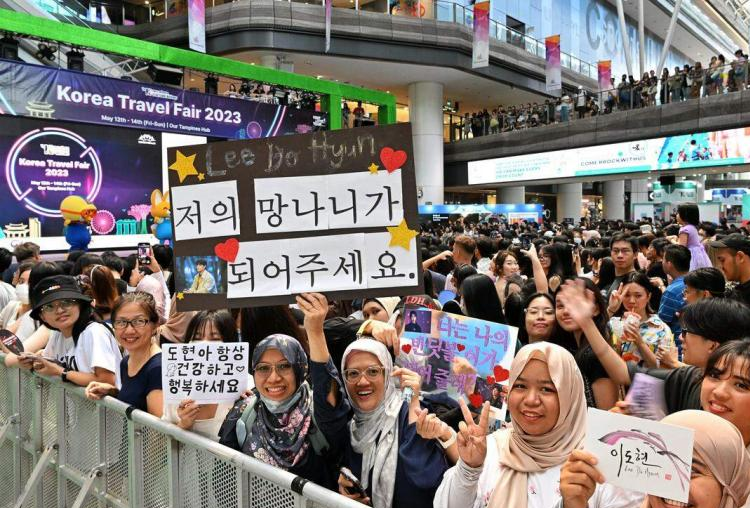
According to a new study released by short video platform TikTok and market research firm Kantar, global spending on the Korean wave is expected to nearly double to $143 billion by 2030.
The popularity of K-pop content has been further amplified by social platforms, where users express their love for Korean TV dramas, K-pop music, Korean food and cosmetics, Bloomberg reported.
TikTok, which initially soared in popularity with short videos of young people dancing to pop songs, has become an online meeting place for K-pop fans. In recent years, this scope has also expanded to include Korean culture and Korean traditions.
hallyu (Korean Wave) is an umbrella term for Korean cultural exports. The market size of the Korean Wave is estimated at $76 billion, and viral content around Korean culture should be able to attract a larger audience in key markets such as the United States and Southeast Asia, driving its market size growth.
If all interested potential consumers start buying Korean consumer goods, services, and entertainment, the total spending on the Korean Wave could be as high as $198 billion by 2030.
The output of the Korean Wave is still relatively small compared with Japan, North Asia's original cultural heavyweight, but social media is helping to close the gap.
TikTok, owned by China's ByteDance, has increasingly featured content on topics such as Korean food and dramas, driving online interactions, memes and product sales.
Sales of South Korea's Buldak chicken noodles, for example, have soared after a TikTok video featuring American rapper Cardi B commenting on the dish racked up nearly 40 million views, That helped push the share price of South Korea's Samyang Foods Co to a record high this year.
South Korea is known for exporting physical goods, including semiconductors, cars and home appliances, which still dominate the economy. The expansion of the Korean Wave has a ripple effect that is expected to enhance the hard-to-quantify soft power of South Korea and its brands. If nothing else, creative fields such as K-pop and webcoms have produced a new generation of multimillionaires.
In South Korea, TikTok's audience is still dwarfed by YouTube and Instagram. Despite TikTok's huge influence in spreading the Korean wave internationally, local users tend to use other social platforms. But in the United States and Southeast Asia, the study found that about 80 percent of users learned about the Korean Wave through TikTok.
Hyunho Son, general manager of global business solutions at TikTok Korea, said: "If you look at the success stories of Korean content in global trends, they tend to be triggered by secondary content from Southeast Asian creators. This shows that the Southeast Asian market is becoming a gateway and hub for the global popularity trend of Korean wave content."

The European Commission released a package of measures for the automotive industry on Tuesday (December 16th), proposing to relax the requirements related to the "ban on the sale of fuel vehicles" by 2035.
The European Commission released a package of measures for …
Venezuela's Vice President and Oil Minister Rodriguez said …
On December 16 local time, the Ministry of Space Science Ex…
Recently, a highly anticipated phone call between the defen…
Right now, the world's major central banks are standing at …
Recently, according to Xinhua News Agency, the news of a tr…